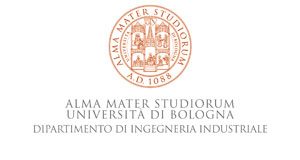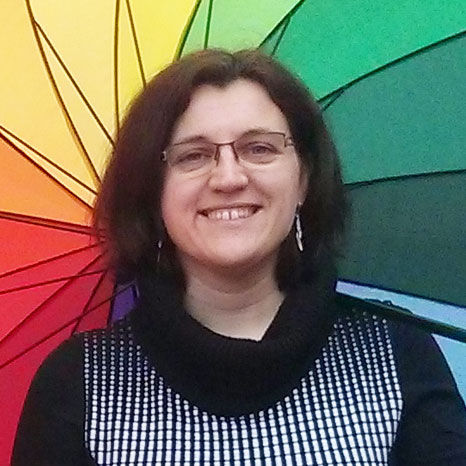
Julia Borras
Title: Precision Grasping and Dextrous Manipulation with PKMs
Abstract: Dexterous, within-hand manipulation, in which an object generally held in the fingertips is manipulated by the fingers, shares many similarities to parallel robot configurations. We will talk on how to apply a mathematical framework commonly used for parallel robots to study the kinetostatic properties of hands manipulating objects using precision grasps, considering compliance and underactuation in the joints. We will compare the typical grasping formulations to see the equivalences between the jacobian matrices that appear in the models of parallel manipulators. After the duality is formalized, we will explore the transfer of techniques from the parallel manipulators field to grasping and in-hand manipulation, and vice-versa.
In addition, we will explore other dualities between other robotics systems including locomotion, cable-driven robots, the Stewart-Gough platform, and robotic hands.

Tobias Bruckmann
Title: Cable-Driven Parallel Robots – with a Focus on Application Engineering”.
Abstract: “Currently, concepts like Industry 4.0, Cyberphysical Systems and the Internet-of-Things push automation and robotics to new fields of application. Therefore, new robot types arise which allow to apply automation principles in fields where automation has not been introduced yet. This holds especially for large scale applications like construction, assembly or intralogistics. Here, so-called cable-driven parallel robots show great potential. They are able to move a payload by a set of cables in a parallel topology, driven by computerized winches. Cable robots are a very promising approach to provide low-cost and flexible automation solutions. The talk introduces the technology and an overview on the modeling fundamentals. Furthermore, ideas, concepts and first experimental results towards practical applications are presented.”
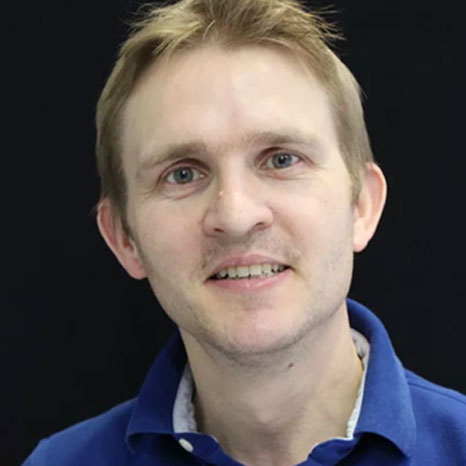
Stephane Caro
Title: Singularity Analysis of Lower-Mobility Parallel Manipulators
Abstract: In recent decades, parallel manipulators have attracted the attention of the academic and industrial communities. Compared to serial manipulators, parallel manipulators generally have greater stiffness and accuracy, although their workspace is limited. Planar, spherical, translational and Schönflies movements are types of motion that require less than six degrees of freedom (dof). and are very useful for industrial applications. Parallel manipulators can exhibit certain critical configurations called “parallel singularities”, which are characterized by uncontrollable movements of the moving platform. In addition, compared to their six dof counterparts, parallel manipulators with restricted mobility may exhibit an additional type of parallel singularities, called “stress singularities”, which can lead to a change in the mode of motion of the moving platform.
Parallel singularities are related to the rank deficiency of a 6 × 6 Jacobian matrix. Consequently, the classical methods consist in a direct analysis of this matrix by examining the cancellation conditions of its determinant. Generally, these methods do not give satisfactory results since the determinant of the Jacobian matrix may be difficult to interpret. Thus, alternative approaches, using Grassmann-Cayley algebra and/or Grassmann geometry, have been proposed in the literature to analyze the vanishing conditions of this determinant. These approaches are based on the correspondence between the lines composing the Jacobian matrix and Plücker vectors, i.e. six-component vectors representing lines in the three-dimensional projective space.
Grassmann-Cayley algebra and Grassmann geometry have been mainly used for the analysis of the parallel singularities of six dof. parallel manipulators such as some simplified architectures of Gough-Stewart platforms whose Jacobian matrix is composed of Plücker coordinate vectors of six finite lines. However, the proposed procedures do not apply, in the general case, to parallel manipulators with restricted mobility because of the complexity and diversity of their kinematic characteristics and the properties of the Plücker vectors that form their Jacobian matrix The aim of this presentation will be to highlight through some examples the complementarity of Grassmann-Cayley algebra and Grassmann geometry for the analysis of parallel singularities of parallel manipulators with restricted mobility.

Marco Carricato
Title: Screw theory and its application in Robotics
Abstract: In this session, the theory of screws will be introduced and it will be shown how they can find application in several fields of robotics, including singularity and mobility analysis, type synthesis, constraint design, etc. Screws are geometrical entities that represent both the instantaneous motion of a rigid body (in the form of a twist) and the set of generalized forces acting upon it (in the form of a wrench). Thus, screw theory naturally provides the geometrical and algebraic concepts and tools underlying the first-order kinematics and statics of rigid bodies. The importance of screw theory in robotics is widely recognized. Methods and formalisms based on the geometry and algebra of screws have been shown to be particularly effective and have led to significant advances in a variety of areas of robotics, including mobility analysis, singularities, constraint design, and type synthesis of parallel manipulators. The main reason for this success is the strong geometrical insight that screw theory sheds on many complex physical phenomena that roboticists have to deal with. This lecture will deliver an overview of the basic concepts and some of the main applications of screw-theory, with emphasis being given on geometrical interpretation and understanding, rather than on computational issues.
Outline:
– First-order kinematics and statics of rigid bodies.
– Twist and wrench vector spaces: freedom and constraints; screw systems
– Singularity analysis
– Mobility analysis.
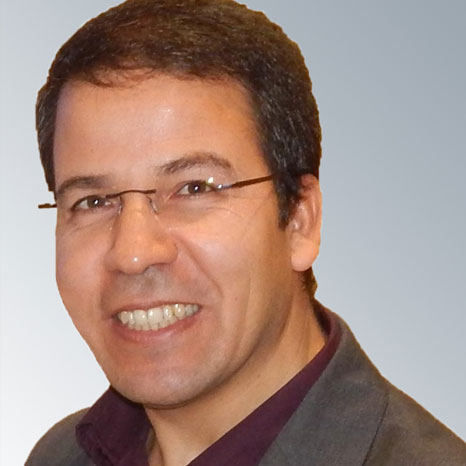
Ahmed Chemori
Advanced Motion Control of PKMs : From Theory to Practice
Abstract: Parallel Kinematic Manipulators (PKMs) are known by various advantages with respect to their serial counterparts in terms of stiffness, speed, accuracy and payload. However, these robots are characterized by their high nonlinear dynamics, kinematic redundancy, uncertainties, actuation redundancy, singularities, etc. Indeed, when interested, for instance, in high-speed robotized repetitive tasks, such as food packaging applications, the key idea lies in looking for short cycle-times. This means obviously to look for short motions, but also for short stabilization times while guaranteeing the robustness and performance with respect to external disturbances and changes/uncertainties in the operational conditions. Consequently, if we are interested in control of such robots, all these issues should be taken into account, which makes it a bit challenging task.
This talk will give an overview of some proposed advanced control solutions for high-speed applications of PKMs in food packaging as well as in machining tasks. The proposed solutions are mainly borrowed from nonlinear robust and adaptive control techniques and have been validated through real-time experiments on different PKM prototypes.
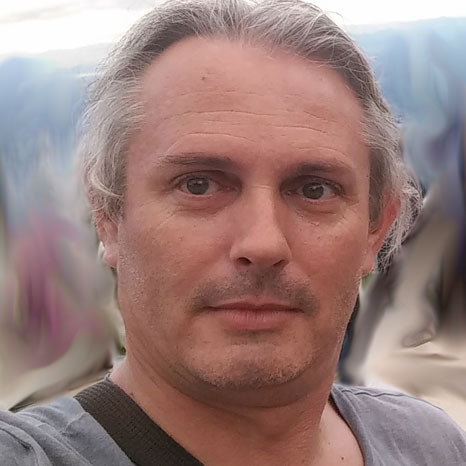
Olivier Company
Technological aspects in PKM design
Abstract: This talk will deal with the CAD aspects, once all other scientific issues have been solved. It is also better to have the design issues in mind to express meaningful constraints during the optimization phase. Nevertheless, a prototype has to been built for test and demonstration purposes. That’s the time to make some choices and avoid some mistakes.
In a first part, classical PKM architectures from the literature are presented. The CAD phase needs to design specific parts and to integrate on-the-shelf components. These two aspects are investigated. What are the good shapes for the designed parts? What are the weaknesses of classical the on-the-shelf components and how to use them to reach the specifications (force, speed, accuracy…) for the prototype?
In a nutshell, bending in elements, flexture hinges, joints (actuated and passive), sensors location, collisions, actuators, thermal aspects… will dbe developped.
The presentation will use examples from already built prototypes and from some industrial robots.

Antonio Frisoli
Title: How to deal with underactuation and kinematic redundancy in exoskeleton design and telerobotics
Abstract: During this lecture we will analyze how underactuation and kinematic redundancy can be exploited for optimization of performance in the design and control of wearable robots and in human-robot interaction.
In particular we will analyze how it can be kinematically studies the connection of a robotic exoskeleton to a human, in order to reduce the axes misalignment between human and robotic system. This misalignment can lead to undesired interaction loads (UI loads) that can render wearing uncomfortable. Moreover perfect alignment of joints requires that either to adapt robot links size to human anthropometric dimensions or to use self-alignment mechanisms based on passive joints.
We will address first a systematic approach to the synthesis of self-alignment mechanisms, first proposed by Jarrasse et al by studying the general problem of connecting two similar kinematic chains through multiple passive joints and a further generalization of this approach in terms of type synthesis of self-adapting upper-limb exoskeletons that considers the application of the mobility formula to multiloop linkages
Then we will analyze common kinematic solutions for hand exoskeleton and we’ll see how underactuation can be used in grasping and exoskeleton design. In particular we will derive optimal conditions to derive the control of actuators when in case of high underactuation there exists an asymmetry between degrees of freedom of the exoskeleton and controlled actuated ones. Finally we will analyze how kinematic redundancy can be exploited in control and telerobotics for dissipation of energy in the null space. This approach allows to explain how the redundant degrees of freedom can be used to optimize energy flow between master and slaves in teleoperated systems under time delay.
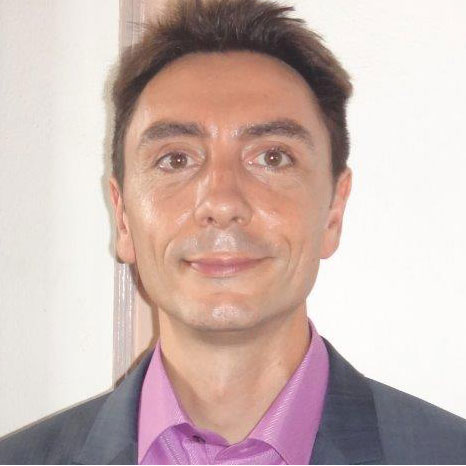
Marc Gouttefarde
Title: Cable-Driven Parallel Robots
Abstract: Cable-Driven Parallel Robots (CDPRs) consist essentially of a mobile platform driven by cables which are arranged in a parallel topology. A motion of the mobile platform is induced by modifying the cable lengths, the latter being controlled by means of winches. Peculiarities of CDPRs include a possibly very large workspace, heavy payload capabilities and the fact that the cables are flexible mechanical components which can pull but not push on the mobile platform (unidirectional actuation). This lecture first proposes an overview of CDPR designs and of some of their applications. The kinematics, statics and dynamics of CDPRs are then introduced. Workspace definitions and wrench-feasibility are discussed. Finally, cable tension distribution and basic control strategies of CDPRs are presented.
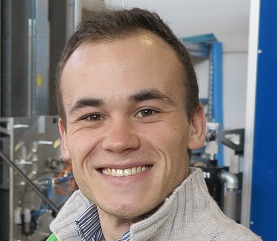
Johann Lamaury
Title: Industrial Issues – Beyond Accuracy
Abstract: Strong with 20 years of experience in the design and production of parallel robots, SYMETRIE is now one of the world’s leading providers of hexapod solutions for positioning and motion applications. Its success lies on its capacity to adapt this technology to many kind of environments related to various applications, while always pushing further the quality and accuracy of its parallel robots. After briefly introducing our company products and history, some of our most significant achievements will be shared together with our very last challenges. The current market demand around parallel robotics will be addressed and we will see together what it takes to answer it.
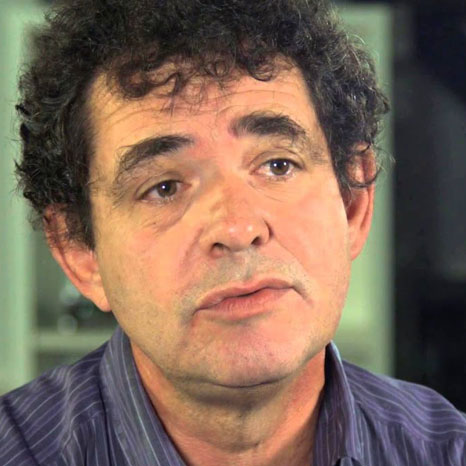
Jean-Pierre Merlet
Title: Managing uncertainties in parallel robots
Abstract: Parallel robots, like any other mechatronic system, are submitted to unavoidable uncertainties in their geometry, sensing, control that may affect their real performances. This lecture will first start by a reflexion on what should be the objectives of managing uncertainties in the design and exploitation of parallel robots, how these objectives can be translated into a mathematical/computer formulation and also examining what are the constraints imposed by the various cases in which uncertainties have to be tackled. We will then present various mathematical approaches that may be used to reach these objectives. They will be illustrated by various real-life examples for parallel robots with rigid legs and cable-driven parallel robots.
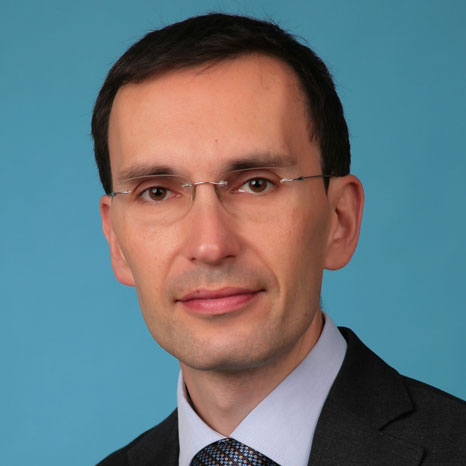
Andreas Müeller
Title: Dynamics of Parallel Kinematic Manipulators
Abstract: Parallel Kinematic Manipulators (PKM), also called Parallel Kinematic Machines, are dexterous and agile robotic systems used to perform highly-demanding tasks. Consequently, their design and control relies on high-fidelity dynamic models. These dynamics models must be computationally efficient and at the same time the actual modeling shall be transparent and systematic, and involve only parameters that readily available independently of particular type of PKM. Furthermore, PKM are multibody systems possessing a particular kinematic topology reflecting the modular setup of PKM.
In this lecture, a geometric user-friendly modeling approach is introduced that allows a systematic and modular treatment of fully parallel PKM [1] and, more generally, topologically simple PKM [2]. This geometric framework rests on the use of screws and Lie groups [3].
The application of the dynamic models for control and simulation is briefly discussed. The lecture is accompanied by a simulation lab where attendees will be familiarized with the relevant dynamics simulation software.
Suggested References
[1] J.P. Merlet: Parallel Robots, Springer, 2006
[2] A. Mueller: Dynamics Modeling of Topologically Simple Parallel Manipulators: A Geometric Approach, ASME Applied Mechanics Review, Vol. 72, 2020, 030801, 26 pages
[3] J.M. Selig: Geometric Fundamentals of Robotics, Springer, 2005

Alberto Parmiggiani
Title : Humanoids and PKMs
Abstract: Humanoid robots have traditionally been designed and constructed by combining rotational joints in serial kinematic chains. This approach has the advantage of limiting the overall system complexity, that is a critical factor in a machine whose DOF count easily exceeds 20.
This approach, however, causes inherent performance limitations (e.g. payload-to-weight ratio), that can be overcome integrating mechanisms with parallel kinematics as part of the robot’s structure.
Parallel kinematic machines (PKM) and parallel orientational mechanisms (POM) have the advantage of being generally stiffer and lighter than serial systems. On the other hand, they are also generally harder to construct and control.
This lecture will present implementation examples of PKM and POM in the humanoid robots iCub and R1 developed at IIT in recent years. The lecture will present typical design and implementation challenges and possible strategies to solve these.

Nicolas Sancisi
Title: Synthesis of spatial parallel mechanisms for human joint modelling and prosthesis design
Abstract: The importance of computational joint models in surgery, pre-surgical planning and prosthesis design has been widely recognized. In this context, parallel mechanisms can be successfully applied to the modelling of diarthrodial joints, such as the knee and ankle: these mechanisms allow one-to-one representation of the joint constraints, making it possible to reproduce the joint behaviour in an accurate and computationally efficient way. These models have found application in the design of joint prostheses and other medical devices; have been integrated into musculoskeletal models for clinical gait analyses; have been used to predict the effect of pathologies and implants on the joint behaviour of patients.
This lecture will present the theoretical and biomechanical bases for the definition and the synthesis of parallel mechanisms applied to the human joint modelling. Several applications will be presented, as examples of the potentialities that parallel mechanisms have also in this context. Some open issues will be discussed for possible future developments and applications.

